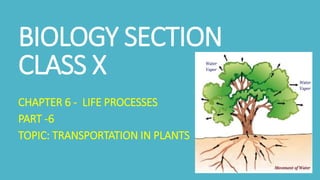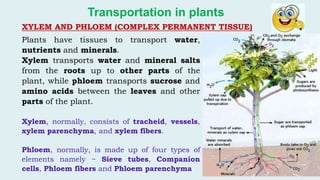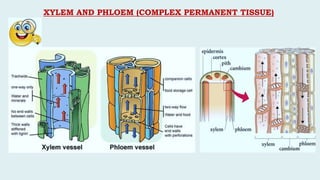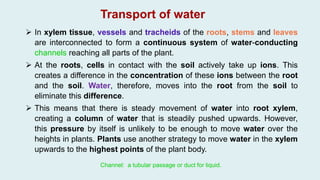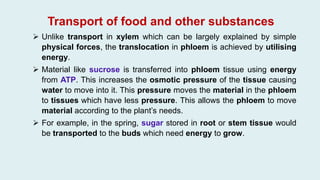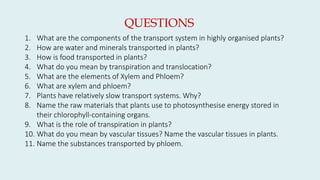Plants have tissue systems for transporting water, nutrients, and food throughout the plant. Xylem transports water and minerals up from the roots, while phloem transports sucrose and other products of photosynthesis between the leaves and other plant parts. Transpiration creates a pull that drives the movement of water through the xylem, while phloem transport is active and uses energy to move materials.
